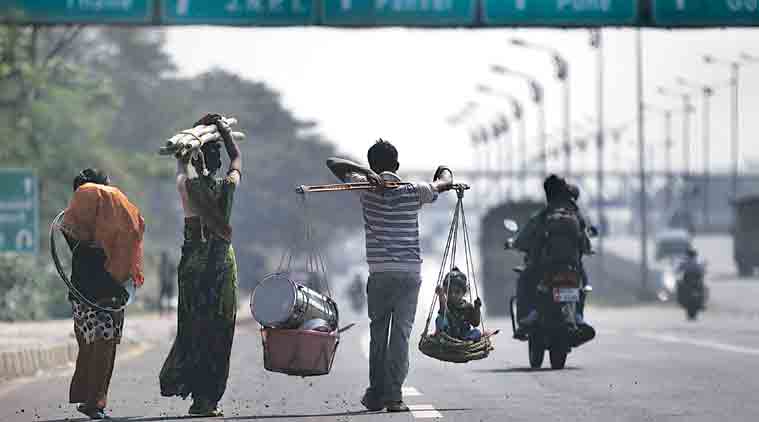
There was a case in the Calcutta High Court in July 1947, an appeal actually. “One Dinesh Chandra Guha is alleged to have effected alteration in the water pipe of his house by persons who are not plumbers licensed by the municipality.” Hence, Guha violated the provisions of municipal laws. “The learned magistrate trying the case has found that the alteration was effected by Dinesh Chandra Guha employing certain Ooriya mistries. The magistrate also found that the Ooriya mistries were not licensed plumbers.” Plumbers from Odisha are not a new phenomenon, at least in Kolkata.
Migration studies for Kolkata, around the time of Independence, report Odia workers were employed in plumbing, gas and electrical works. There was a suggestion that Muslim plumbers emigrated to East Pakistan after Independence and the vacuum they left was filled by plumbers from Odisha. I can’t figure out if this was statistically large. In any event, there have been plenty of Odia plumbers in Kolkata and there are plenty of Odia plumbers everywhere in India now. Every plumber you encounter seems to be from Odisha.
Indeed, one can narrow down our search and say every plumber is from Kendrapara, narrow it down further and say every plumber is from Pattamundai.
Pattamundai is a tehsil (a revenue block) and also an urban local body/municipality. The population of the notified area committee (for our purposes, synonymous with the town) of Pattamundai was 36,528 in 2011 Census. Pattamundai tehsil, with 155 villages, had a population of 219,063. There are figures floating around, which suggest that 100,000 plumbers from Odisha work in different parts of India, not including those who work abroad, such as in the Middle East. It seems implausible that all of them are from Pattamundai.
Indeed, they are not. They are mostly from Kendrapara, but also from tehsils like Aul (population of 139,628 in 2011), Rajkanika (population of 140,807) and Rajnagar (population of 163,450). There was a 2015 out-migration study for Odisha and for Kendrapara district, it gave an out-migration rate (defined as percentage of households who had a migrant) of 47 per cent, and an absolute figure of 143,782.
True, all these migrants were not plumbers. But the study also said they were generally skilled workers in construction, especially plumbers and masons. Therefore, the 100,000 figure is believable. Why are there so many plumbers from Kendrapara? This is usually ascribed to the State Institute of Plumbing Technology (SIPT) in Pattamundai. But that’s at best a partial answer. The institute was established in 2010 and plumbers from Odisha predate this institute.
“You reach a customer’s place and he tells you that the sink in his bathroom is draining water at a very slow rate, but the tub and toilet are draining normally. Which of the following will you check first to diagnose this problem? (A) I will check if the main drain or the sewer line is blocked causing the water from sink to drain slowly; (B) I will check if the faucet of the bathroom sink is leaking; (C) I will check if the underground piping near the bathroom sink is leaking; (D) I will check if the drain pipe connected to the bathroom sink is clogged.”
This is from a test of “aspiring minds” administered in 2015 to 3,000 plumbers who had already gone through four to eight weeks of training. Only 43.6 per cent of the trained plumbers got the answer right. This question is more about analytical skills, less about plumbing skills. The “aspiring minds” study concluded 80 per cent of the candidates possessed knowledge of basic plumbing skills, but 55 to 66 per cent couldn’t handle real-life plumbing problems. At least, these candidates went through some training.
The Indian Plumbing Skill Council (IPSC) tells us that 90 per cent of Indian plumbers don’t have formal training. Typically, one joins as a helper. With self-learning and on the job training, one graduates and becomes a plumber and perhaps even a supervisor or foreman. We shouldn’t be surprised. This is true of most skill acquisition.
IPSC’s estimate is 70 per cent of the plumbers come from Kendrapara and there are 800,000 plumbers. If both numbers are correct (I suspect they aren’t), you get 560,000 plumbers from Kendrapara, not 100,000. Lack of formal training doesn’t mean plumbers lack skills. (Out of eight hundred thousand, 352,000 are estimated to possess informal and uncertified skills.) It does mean those skills lack requisite quality and certification. This was the Kendrapara model.
However, let’s also not forget the Kendrapara model also provided access to placement networks, even though those were informal too. That’s the reason it worked. Kendrapara and SIPT now have competition, with specific plumbing training institutions in Gurugram, Vijayawada, Bengaluru and Manesar and training labs and training programmes in several places. But that should be fine. First, even with a given number of plumbers, one needs more formalised training and placement, with different gradations in level of training.
Second, for a variety of reasons, demand for plumbers is bound to increase. Apparently, we will have 1,200,000 certified plumbers by 2022, courtesy IPSC and National Skill Development Corporation (NSDC).
I did a random search on salaries of graduates and plumbers in Kolkata. Such small sample searches are always unreliable, but nonetheless indicative. An ordinary graduate earns Rs 10,000 per month. A plumber earns Rs 20,000 per month. There is thus the broader issue about whether the educational system delivers marketable skills. But partly, this also seems to be an international phenomenon. For instance, I find the average salary of a graduate in London is £27,000, while that of a plumber is £34,885.
This article first appeared in the print edition on May 16, 2019 under the title ‘The Kendrapara model’. The writer is chairman, Economic Advisory Council to the PM. Views are personal.